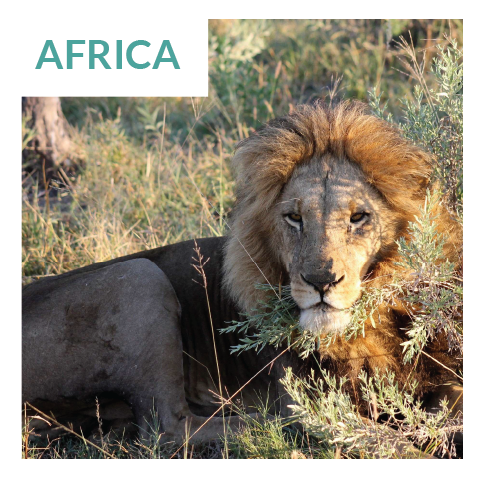- Quietly sipping hot morning coffee while parked by a beautiful wooded lake in Hwange National Park, the peace is suddenly shattered by a threatening hippopotamus snort followed by gaping jaws as he shatters the water’s surface just metres from our jeep.
- Bumping along the track in an open jeep in the savannah, navigating a sharp bend in the tall grass, the jeep lurches to a halt to avoid a huge male lion leisurely lying across our path. The lion stares into our eyes as if daring us to politely ask that he move off the track so we can continue to cross the mouth of the Selinda Spillway that links the Okavango to the Linyanti Swamps.
- Awakened from deep sleep by unfamiliar grunts and bumps against the walls of the tent, fear drives me deeper into the warm comforter pulled over my head. A tent by the water of in the Botswana’s Okavango Delta seemed thin protection from the monster outside.
Three safari trips, three days in each camp, in the savannah, grasslands, and pans (dry creeks and waterways), along the river and in the Okavango Delta and forest reserve, offer amazing opportunities to see the animals of Africa. Three intimate camps, with beautiful facilities, individual tent sleeping with a large comfortable bed for my husband and me, complete toilet and shower facility and porch for viewing the animals across the landscape. The incredibly close encounters with numerous animals led us to question, “Who is watching whom?”
Rounding a bend on an early morning safari, two majestic male lions lie lazily in a clearing. We quietly admire them as they groom themselves and each other, often looking directly at us, then ignoring our presence while they watchfully scan the nearby grasslands for potential prey. Moving on, baboons, buffalo, zebra and other animals are plentiful on the pans. Jackals surround our jeep, on their way to circling a herd of zebra.
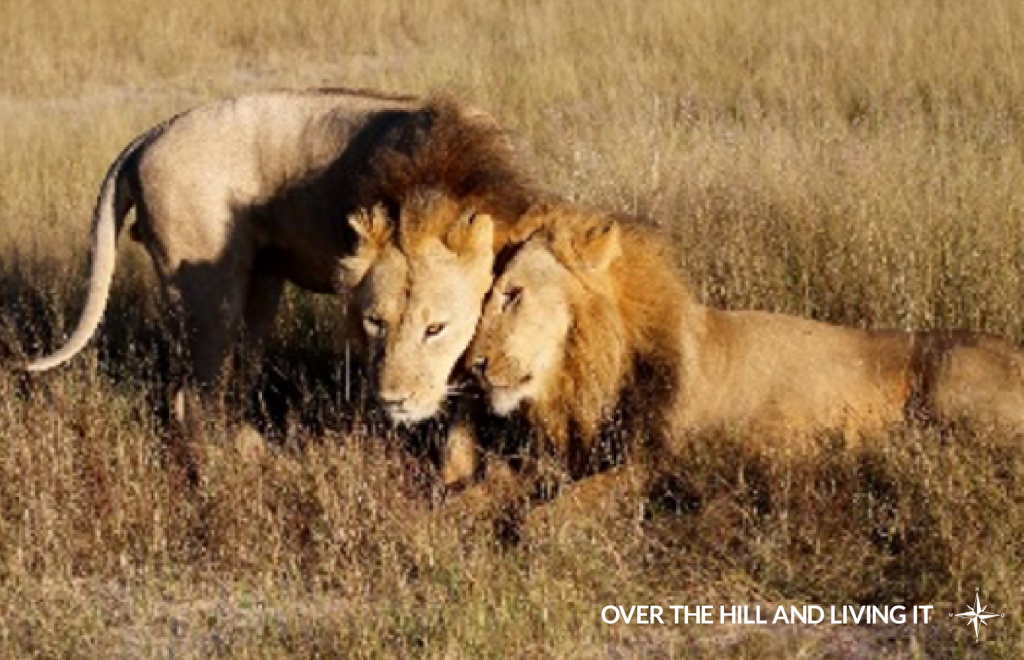
Afternoon safari in a forest area reveals a cheetah, lounging in the sun about three metres from our jeep. It stretches, maintains eye contact and appears to pose for our best photos. Moving to a dead tree trunk, it stretches out to sharpen its claws, always watching us as if we were the show. Returning to camp, a young, large elephant stands in the middle of the track staring us down, challenging us. We pull to a stop, the elephant makes several lunging movements, raises his head and throws his trunk threateningly and then turns to the side and moves off the track, claiming victory but allowing us to pass.
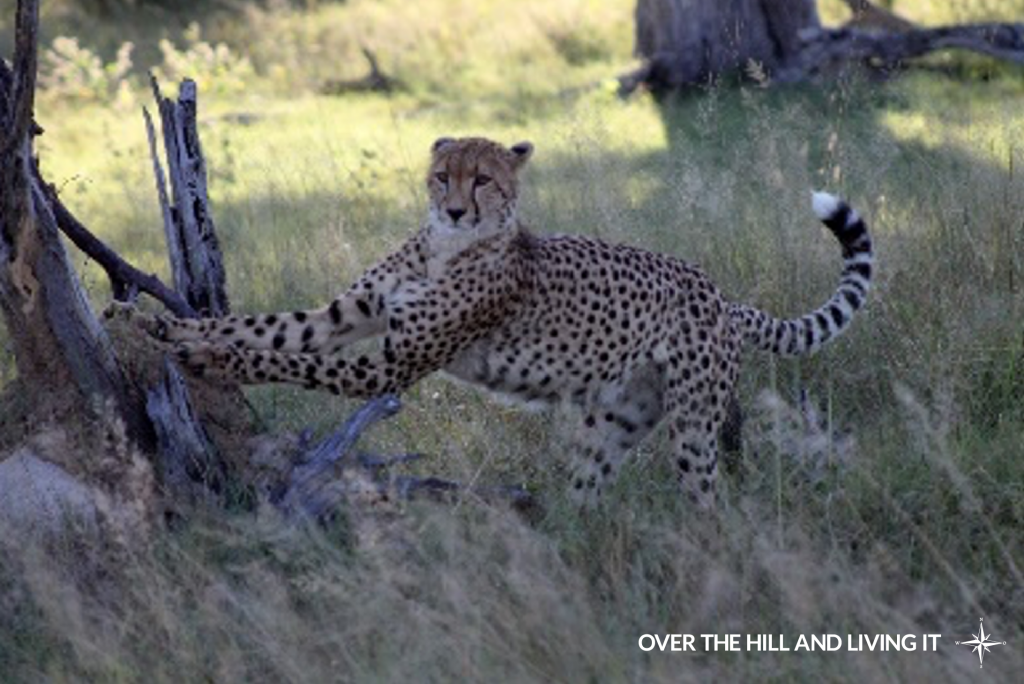
Each safari day follows the same routine, coffee and light breakfast, morning safari, lunch, nap, late afternoon safari, dinner, camp fire and to bed, but the sights and animals change daily. Each late afternoon as the sun approaches the horizon, we stop, on a pan, an island, in a boat or by a small lake and the guide serves wine and appies. The “Sundowner”, stopping to watch the sun go down while drinking wine We admire the beauty of the closing day and think about all the animals we have seen this day as the sun goes beneath the horizon.
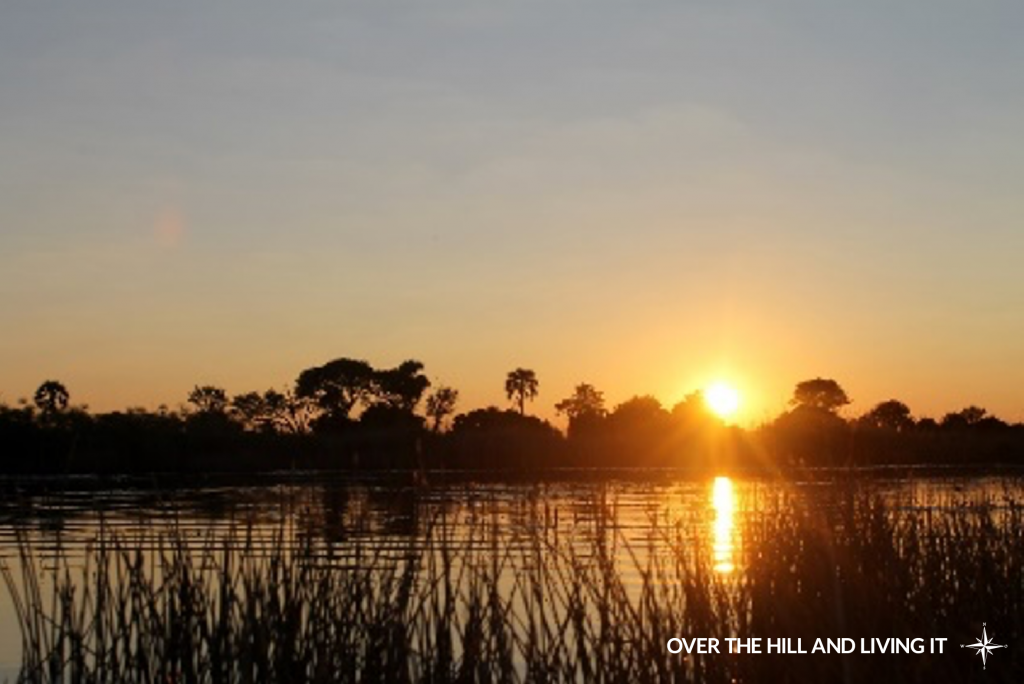
While traveling we see hippos in a water hole, red lechwe (an antelope), wildebeest, ostrich, and many more animals. A two-metre python lays silently stretched along the fence by the path to our tent. A short distance in front of our tent is the water of the delta that houses a hippo as big as an adult elephant that we can see and hear during daylight. At night, he enjoys grazing on the grasses around the tents, initially frightening us but causing no damage as he bumps and grunts awkwardly through the camp. Two additional days touring in the open jeep we see Tsessebe, red lechwe, kudu, springbuck, buffalo and others.
We take a jeep ride to a boat launch, then a flat-bottom motor boat on the river to camp. We slowly navigate around the reeds. Suddenly we have a close, unexpected encounter when a hippopotamus rises next to the boat, blows out his air, opens his mouth and throws his head back and forth eyeing us menacingly. Our boat captain slowly backs the boat away from the master and his nearby herd, taking the hippo warning seriously, not chancing a boat being overturned by a disgruntled male hippo.
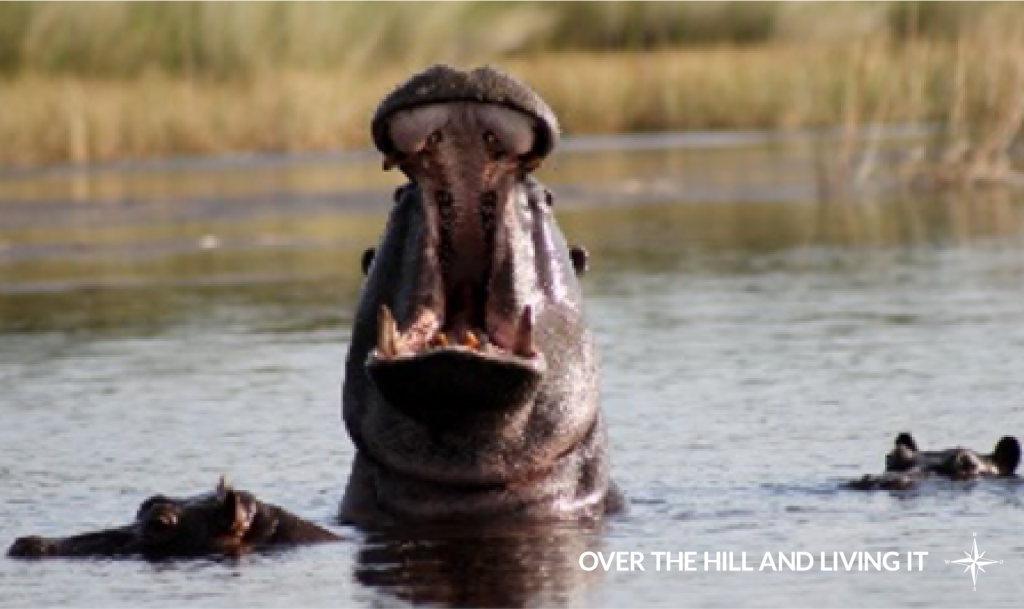
A pride of lions share a recent kill, a warthog. Seven females and one male, with blood covering their jaws, front legs and paws, consume their feast. One lioness sneaks away with the head but the others demand she share, by rather competitively going after her. As our jeep bumps along a male lion lies across the sandy track, eyes fixed on us. He lays leisurely for a while then slowly stands up, stretches, and moves to the side of the track, lying down again, with eyes always watching us. Navigating a thicket, a hyena comes out in the daylight to explore our jeep. He circles the car, looking carefully at us, raising his face and sniffing. Satisfied, he loses interest and walks away, back into the concealing thicket of small bushes where we cannot follow.
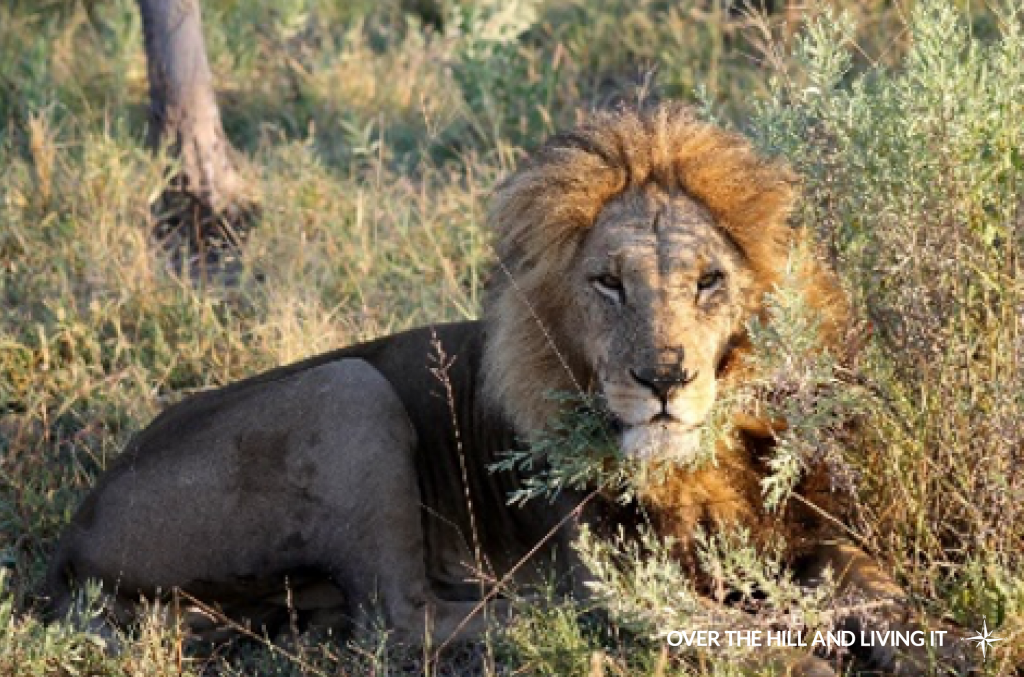
Entering a stand of trees, hoping to find a leopard, we are quickly surrounded by a herd of elephants, mothers and their young. They seem fascinated with us and come so close they can touch the jeep with their trunks. The guide bangs on the side of the jeep to discourage any actual contact and soon the elephants lose interest and wander away.
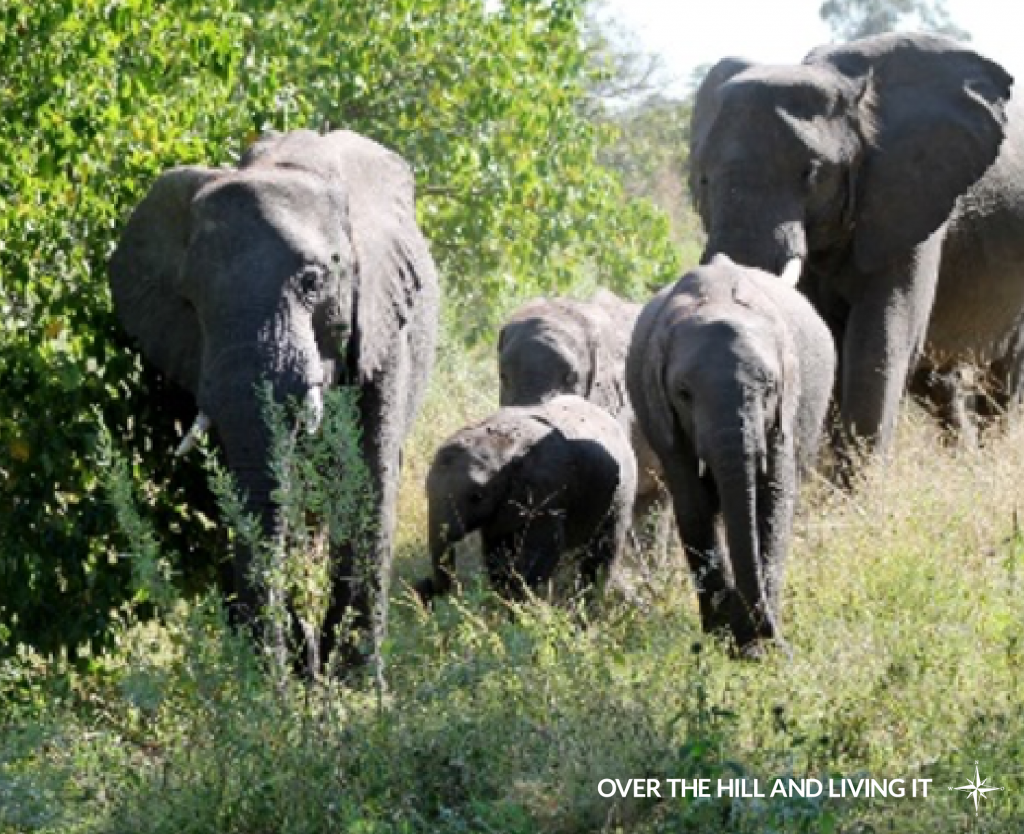
Soon, we come upon a giraffe grazing on the leaves high in the trees. He bends over, looks intently at us then returns to his peaceful grazing as we move on.
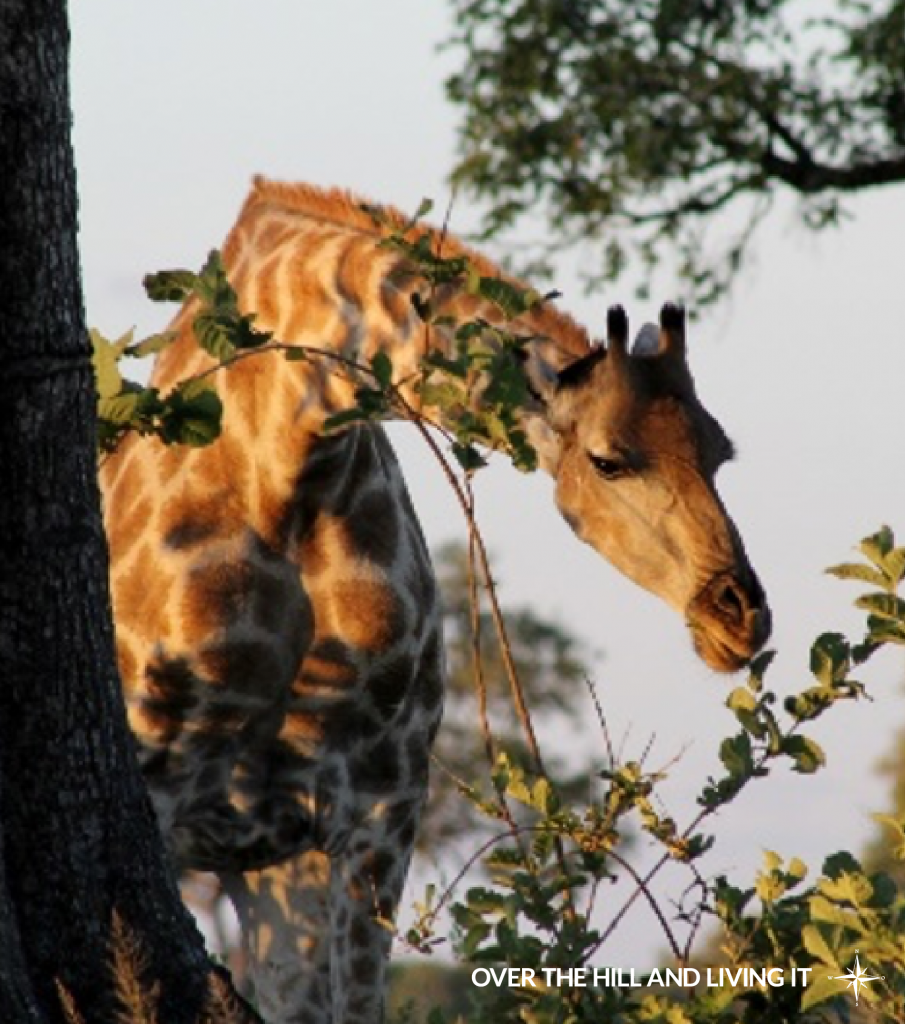
Three camps, each with unique characteristics, three different environments from savannah to delta to woodlands, an incredible way to see Africa and to intimately experience the incredible range of wild life. We left with the sense of satisfaction that we had been up close and personal with so many “wild” animals of Africa giving us new memories of a lifetime.
